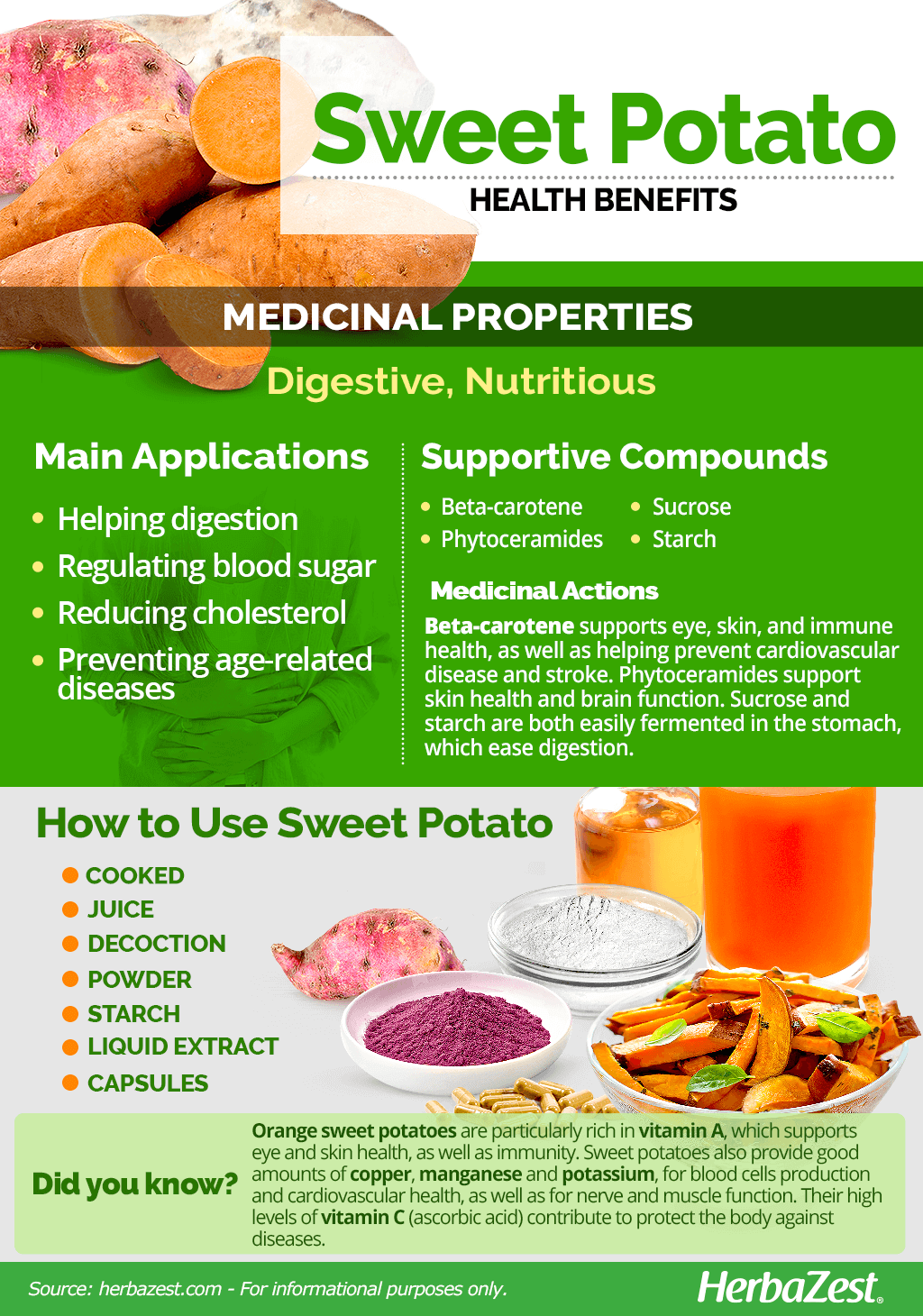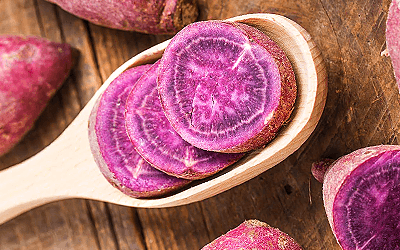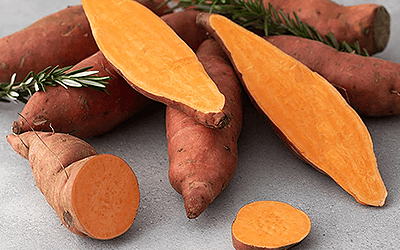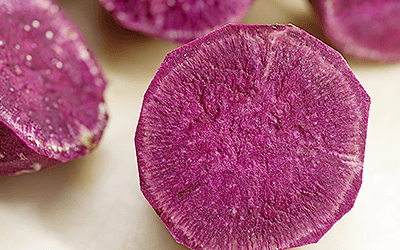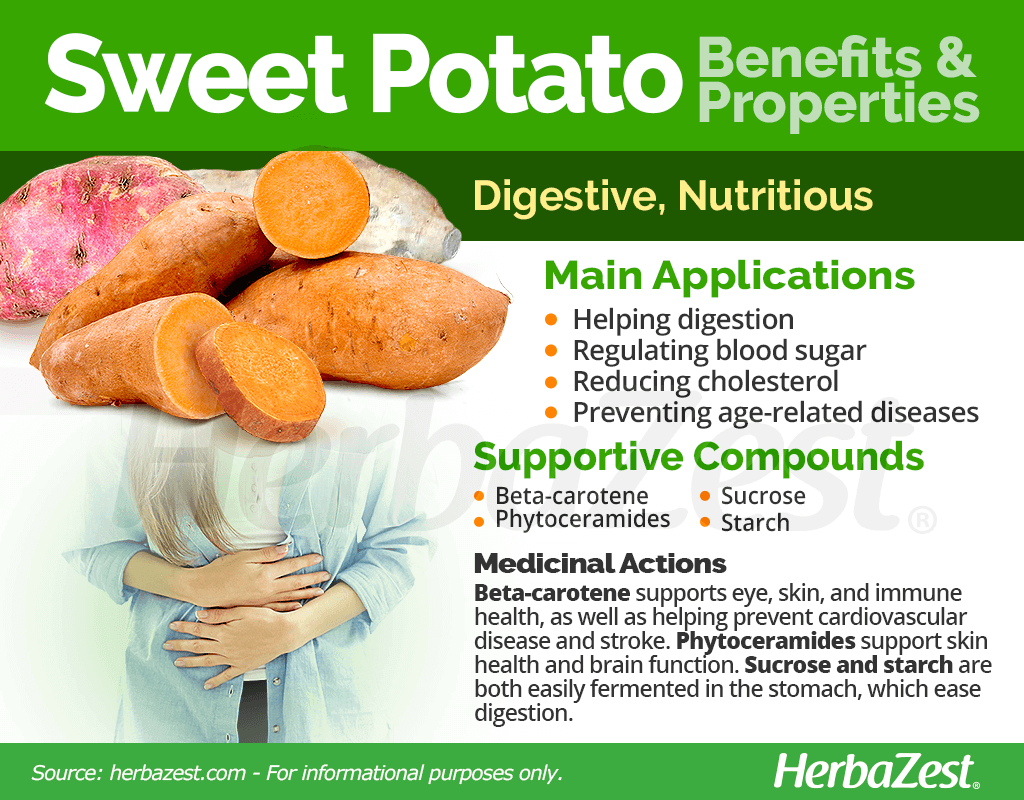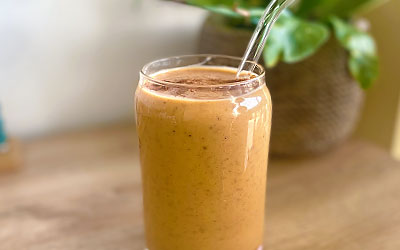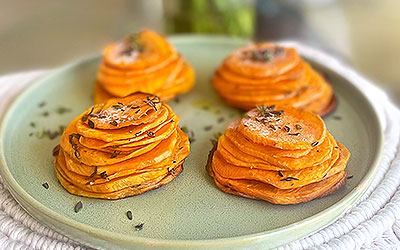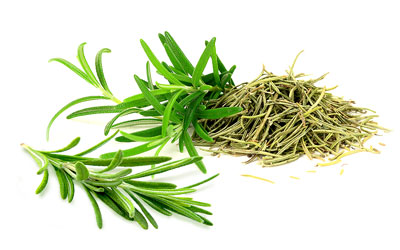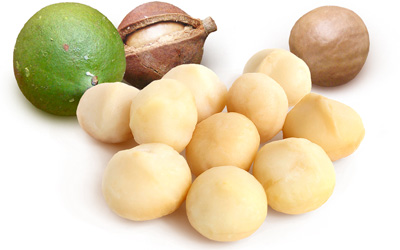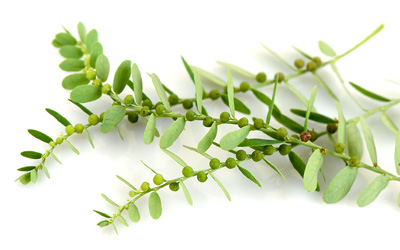Although its origins are unclear, it has been accepted that sweet potato is a root crop from Central America and the South Pacific islands, where the first wild tuber-bearing populations are believed to have been domesticated and consumed.
Sweet Potato Medicinal Properties
Health Benefits of Sweet Potato
Sweet potato, particularly the orange-fleshed variety, is well-known for being high in carbohydrates and rich in fiber and essential nutrients. However, the medicinal value of sweet potato is often overlooked. These are some of the most remarkable sweet potato health benefits:
Helping digestion. Sweet potatoes are a great choice for aiding digestion, stimulating regular bowel movements, and relieving symptoms of irritable bowel syndrome (IBS).
Regulating blood sugar. In spite of their natural sugar content, sweet potatoes have a low glycemic index and are rich in dietary fiber, which delays blood sugar absorption and prolongs the feeling of satiety.
Additionally, sweet potatoes can be beneficial for:
Reducing cholesterol. Sweet potatoes are highly effective reducing blood "bad cholesterol", as well as increasing the levels of "good" cholesterol, thereby lowering the risk of heart disease.
Preventing age-related diseases. Due to its antioxidant content, sweet potatoes help neutralize free radicals, thus contributing to preventing degenerative diseases as well as supporting eye and skin health.
In parts of Southeast Asia, a sweet potato leaf decoction is used as an astringent, tonic, laxative, and fungicide.
How It Works
The presence of beta-carotene gives sweet potatoes their orange hue.1 This antioxidant compound is important for preventing cellular decay, building strong tissues, and supporting eye, skin, and immunity.2 It also protects the body from cardiovascular disease and reduces the risk of strokes.3
Sweet potato's sucrose and starch are both easily fermented in the stomach, so people with IBS can get benefits from moderate consumption.4 Those who have fructose intolerance can also eat sweet potatoes safely to aid their digestion.
Phytoceramides are plant-based lipids, similar to the ceramides naturally produced by the human body. They play an important role in supporting skin health.5 Sweet potatoes contain plenty of these compounds, which are commonly extracted to produce a number of supplements and moisturizing, anti-aging products. Studies have suggested that phytoceramides may also enhance memory and general brain functions.
Additional sweet potato properties still under investigation. The International Potato Center (CIP) is exploring the potential of purple-fleshed sweet potato, which contains powerful antioxidants (anthocyanins) that are easily absorbed by the human body.
Other nutritious, fiber-rich, and digestion-promoting herbs are avocado, chickpeas, and lucuma, all of which contribute to reducing dangerous cholesterol and blood sugar levels. On the other hand, strong antioxidant properties can be found in cabbage, camu camu, and strawberry.
Cautions and Side Effects of Sweet Potato
There is not a history of serious adverse reactions to sweet potatoes. Sweet potatoes are among the foods that are least often associated with any type of allergy.
- Medicinal action Digestive, Nutritious
- Key constituents Beta-carotene, phytoceramides, sucrose, starch
- Ways to use Capsules, Food, Powder
- Medicinal rating (2) Minorly useful plant
- Safety ranking Safe
Sweet Potato Nutrition
The nutritional benefits of sweet potatoes (particularly in the orange fleshed variety) are mainly based on their rich content of beta-carotene, an antioxidant pigment that is a precursor of vitamin A. The levels of beta-carotene in a sweet potato can be identified by the intensity of the tuber's orange pigmentation. Beta-carotene deficiency is the main cause of blindness, disease, and premature death among children under five and pregnant women. This can be prevented by consuming 4.4 ounces (125 g) of sweet potatoes daily, enough to satisfy the beta-carotene needs of a toddler.
Even after being cooked, sweet potatoes are a good source of vitamin C (ascorbic acid), which also possesses antioxidant properties that protect the body from harmful pathogens and help prevent age-related diseases. Additionally, vitamin C enhances iron and calcium absorption, thus contributing to the formation of red blood cells and bone mass.
In addition, sweet potato provides all B-complex vitamins, particularly B5 (pantothenic acid), which is essential for the synthesis of coenzyme A (CoA) and acyl carrier protein(both important for fatty acids metabolism) as well as for proper vitamin B12 absorption; and B6 (pyridoxine), necessary for normal brain development and function, as well as for the production of serotonin and norepinephrine, hormones that influence mood, and melatonin, which helps regulate the body clock.
The potassium in sweet potatoes provides a cardioprotective effect, balancing body fluids and electrolytes, heart and nerve function, and blood pressure. Other minerals, contained in good amounts in the sweet potato tuber are copper, which aids with blood cells production and transport, and manganese, which helps form connective tissue, bones, blood clotting, and sex hormones, as well as regulate important metabolic functions.
The nutritional value of the sweet potato is rounded by smaller amounts of many essential minerals, such as iron, magnesium, phosphorous, zinc, phosphorus, calcium, and vitamin E (alpha-tocopherol).
100 grams of baked sweet potato with skin provide 90 calories, as well as 4%, 7%, and 13% of the dietary value for protein, carbohydrates, and dietary fiber, respectively.
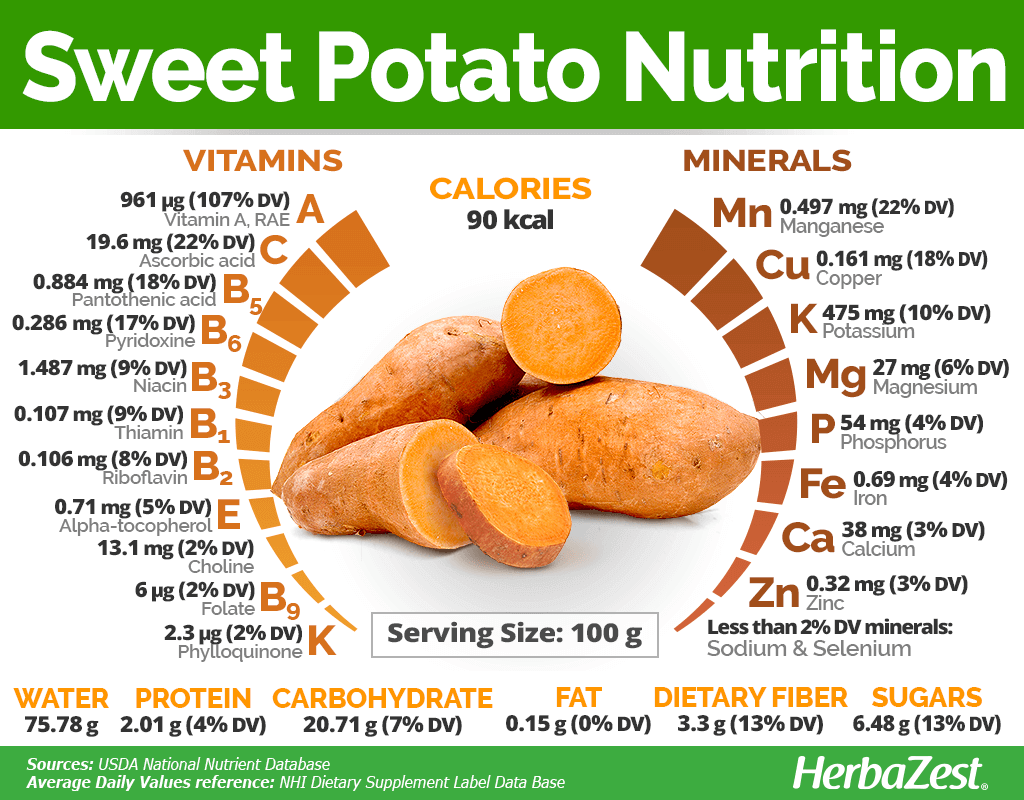
How to Consume Sweet Potato
These popular sweet tubers are consumed in a variety of dishes; however, sweet potato benefits can also be reaped in supplemental forms.
Natural Forms
Cooked. Sweet potatoes' fiber and nutritional content can be obtained by consuming them baked, boiled, or fried, as part of a meal or as a dessert. Sweet potato chips are very popular as a snack, too.
Juice. The raw sweet potato tubers can be juiced to make the most out of their nutrients, mainly beta-carotene. This juice is thought to aid digestion, stabilize blood sugar, relieve stomach ulcers and inflammations, and promote fetal development.
Decoction. Sweet potato tea can be made by boiling the roots in water for few minutes. This preparation is thought to provide high amounts of vitamin A's precursor, beta-carotene, for healthy vision and immunity.
Powder. Because of its high levels of fiber, resistant starch, and nutrients, sweet potato powder is a popular supplement in paleo and sport diets.
Starch. Sweet potato's resistant starch helps with glucose metabolism, and it is also beneficial for the gastrointestinal flora. It is often used as a thickening agent for sauces and soups.
TO MAKE THE MOST OUT OF SWEET POTATOES' DIETARY FIBER, IT IS BETTER TO EAT THEM WITH THEIR SKIN.
Herbal Remedies & Supplements
Liquid extract. Sweet potato extract is often used to flavor sweet recipes; however, it has been shown to be have anti-inflammatory, antioxidant, and anti-obesity effects. It also offers anti-aging benefits and can be used as a skin moisturizer.
Capsules. In this supplemental form, the beta-carotene and phytoceramides of sweet potato can be obtained in standardized daily doses in order to promote skin and eye health, as well as to prevent age-related diseases.
- Edible parts Root
- Taste Sweet
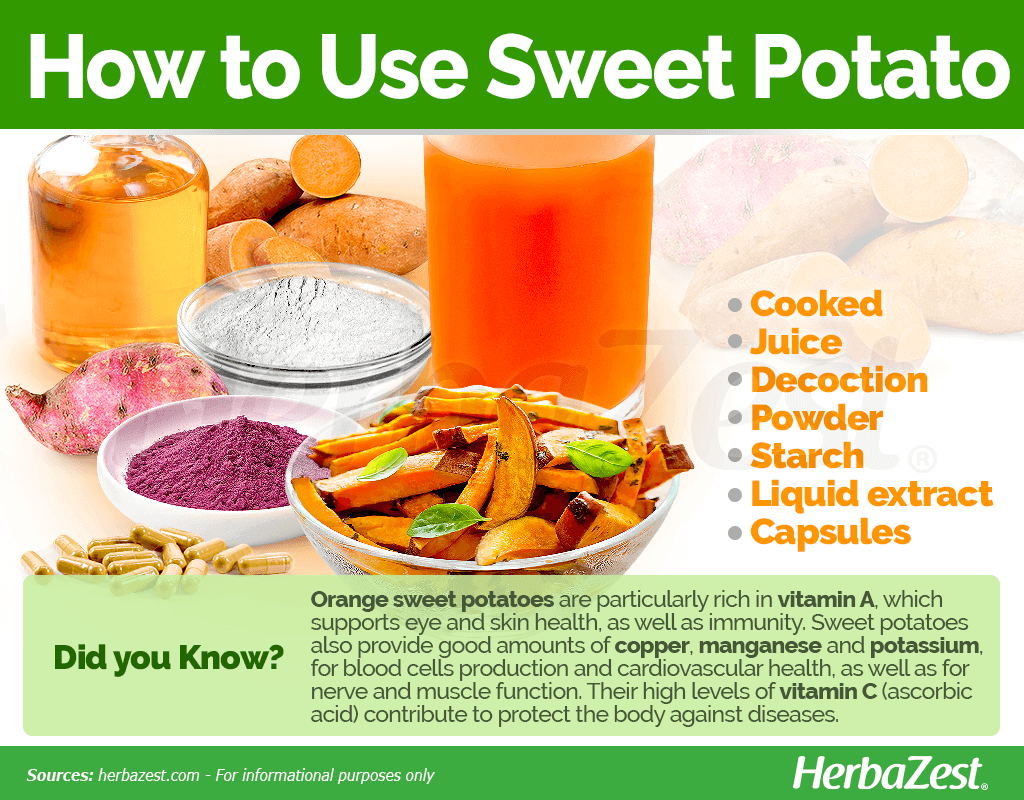
Growing
The sweet potato vine (Ipomoea batatas) is a warm season crop. There are many varieties to choose from, including some suited for cooler climates. This plant is relatively pest-free, and the sweet potato tuber can be stored for a long time after harvest.
Growing Guidelines
The sweet potato vine grows best in warm to hot climates, and it can be damaged by temperatures below 50°F (10°C).
Ideal soil types for sweet potato are fertile, moist, well-drained, and nutrient-rich. Some varieties, like 'Centennial,' tolerate clay soils.
Sweet potatoes are grown from root sprouts. They can also be grown from vine cuttings.
Planting rows should be 32 - 42 inches (81 - 107 cm) apart with in-row spacing of 8 - 12 inches (20 - 30 cm), depending on the cultivar.
Sweet potatoes should be planted at a depth of three inches (8 cm) with no less than two plant nodes in the ground, leaving at least two leaves or more above the ground.
The sweet potato vine is quite drought-tolerant. However, in ideal conditions, it should be watered in moderation. Late watering can cause root cracking.
The sweet potato tuber takes four to five months before it is ready to harvest. Sweet potatoes can be harvested when roots are around two inches (5 cm) thick.
Sweet potatoes require more boron than many other vegetables. If there is soil deficiency, boron should be added to prevent a disorder called "blister" - characterized by small, raised bumps on the root surfaces - and plant stunting.
The sweet potato tuber is very susceptible to damage at harvest since it doesn't have a thick, protective outer layer. Any abrasion can lead to rotting in storage.
Sweet potato weevil is the most serious pest of the sweet potato vine and a major cause of production loss.
- Life cycle Perennial
- Harvested parts Roots
- Light requirements Full sun
- Plant spacing average 0.9 m (2.95 ft)
Additional Information
Plant Biology
Sweet potato is a tuberous-rooted perennial that is usually grown as annual. This herbaceous vine bears alternate heart-shaped leaves, with green to purple veins, and medium-sized flowers, which are commonly known in the U.S. as morning glory and can be white or pale violet. The edible root or sweet potato tuber has a smooth skin, whose color ranges from yellow to orange, red, copper, brown, beige, and purple, while their flesh can be white, yellow, dark orange, red, or purple.
Classification
Sweet potato (Ipomoea batatas) is a member of the Convolvulaceae or morning glory family, which comprises more than 1,000 species across 50 genera. The genus Ipomoea also includes species of popular garden flowers, collectively known as morning glories.
Related species and cultivars of sweet potato
A sweet potato relative is water spinach (Ipomoea aquatica), which is grown for its edible leaves in Southeast Asia, but it is forbidden in the southern states of the U.S. for being an invasive weed. Interestingly, the sweet potato (Ipomoea batatas) is not related to the common potato, or Solanum tuberosum, which is a member of the Solanaceae family.
There are hundreds of cultivars of sweet potato. Among the most common ones in the U.S. can be mentioned: 'Beauregard,' 'Hernandez,' 'Bush Porto Rico,' 'Centennial,' 'Georgia Jet,' 'Jewel,' 'Sumor,' 'Vardaman Bush,' and 'Carolina Bunch.'
THE NAME 'POTATO' IS A VARIATION OF THE TERM 'BATATA,' FROM THE TAINO LANGUAGE (NATIVE TO THE PACIFIC ISLANDS), AND IT ORIGINALLY REFERRED TO THE PLANT AND TUBERS OF SWEET POTATO.
Historical Information
Sweet potatoes are thought to have originated in Central America, somewhere between the Yucatan Peninsula of Mexico and the Orinoco river in Venezuela. However, studies have found historical evidence of these sweet tubers in South Pacific Polynesia, as well as in tropical areas of South America, mainly Peru and Ecuador.
After being discovered by early Portuguese and Spanish explorers in the New World, sweet potatoes were introduced to Spain and western Africa about 1600, from where they quickly spread to India, China, and Japan.
Though the date of sweet potatoes' introduction in North America is unclear, native American people cultivated the crop in southeastern regions way before the arrival of the first Europeans to the continent, which started growing the sweet roots in Virginia around 1648.
Economic Data
China is the biggest producer of sweet potatoes. In 2013, the country produced 68.4% of the estimated world production. After China, the top four sweet potato-producing nations include Nigeria with 3.3%, Uganda with 2.5%, Indonesia with 2.3%, and Vietnam with 1.3% of world production in 2013. With roughly 1% of the total world production, the United States is the sixth-largest sweet potato-producing nation in the world, and Canada is its largest export market.
Other Uses
Gardening. Sweet potatoes have many ornamental cultivars, widely used in landscaping. Since sweet potato belongs to the morning glory genus, its flowers resemble these garden blooms.
Alimentary. Sweet potato, which is rich in starch (about 70%), is used in a variety of manufactured food products and processed meats, mostly for its binding and thickening properties.
Fodder. The leaves of sweet potato are used to feed livestock, mainly in African countries.
Fuel. Sweet potatoes can also be transformed into a bio-fuel called ethanol.
- Other uses Animal feed, Fuel
Sources
- Biomolecules & Therapeutics, Administration of Phytoceramide Enhances Memory and Upregulates the Expression of pCREB and BDNF in Hippocampus of Mice, 2013
- Diabetes Care, Efficacy of Ipomoea batatas (Caiapo) on Diabetes Control in Type 2 Diabetic Subjects Treated With Diet, 2004
- International Journal of Scientific & Technology Research, Some Proximate Properties Of Sweet Potato (Ipomoea Batatas L) As Influenced By Cooking Methods, 2015
- Journal of Animal Science Advances, The Use of Sweet Potato (Ipomoea Batatas) Starch as Binder in Beef and Pork Frankfurter-Type Sausages, 2011
- Journal of Medicine and Biomedical Research, Effect of Sweetpotato Leaf (Ipomoea Batatas) Extract On Some Haematological Parameters Using Rabbits, 2008
- Journal of the American Dietetic Association, Fructose malabsorption and symptoms of irritable bowel syndrome: guidelines for effective dietary management, 2006
- National Tropical Botanical Garden, Ipomoea Batatas
- Public Library of Science Genet, Disentangling the Origins of Cultivated Sweet Potato (Ipomoea batatas (L.) Lam.), 2013
- Purdue University, Ipomoea batatas (L.) Lam.
- Recent Patents on Food, Nutrition & Agriculture, Advances in functional use of sweet potato, [Ipomoea batatas (L.) Lam], 2012
- SpringerPlus, Evaluation of sweet potato for fuel bioethanol production: hydrolysis and fermentation, 2013
- University of Utah, Sweet Potatoes in the Garden, 2010
- USDA Economic Research Service, Commodity Highlight: Sweet Potatoes
- Vegetable Production and Practices, p. 289
- World Crops for the Northeastern United States, Sweet potato Ipomoae batatas
- USDA Plants Database, Natural Resources Conservation Service, Ipomoea batatas (L.) Lam., sweetpotato
- FAOSTAT, Storage and Processing of Roots and Tubers in the Tropics, 1998
- Journal of Medicinal Food, Sweet potato (Ipomoea batatas [L.] Lam)--a valuable medicinal food: a review, 2014
- Public Library of Science One, Disentangling the Origins of Cultivated Sweet Potato (Ipomoea batatas (L.) Lam.), 2013
- International Potato Center, Sweet Potato
Footnotes:
- Journal of Food Science. (2010). Antioxidant capacity and antioxidant content in roots of 4 sweetpotato varieties. Retrieved November 17, 2021, from: https://pubmed.ncbi.nlm.nih.gov/20629859/
- The American Journal of Clinical Nutrition. (2013). The effects of daily consumption of β-cryptoxanthin-rich tangerines and β-carotene-rich sweet potatoes on vitamin A and carotenoid concentrations in plasma and breast milk of Bangladeshi women with low vitamin A status in a randomized controlled trial. Retrieved November 17, 2021, from: https://pubmed.ncbi.nlm.nih.gov/24004891/
- Journal of Food Science and Technology. (2011). Retention of carotenoids in orange-fleshed sweet potato during processing. Retrieved November 17, 2021, from: https://www.ncbi.nlm.nih.gov/pmc/articles/PMC3551189/
- Current Opinion in Pediatrics. (2017). A nutritional approach for managing Irritable Bowel Syndrome. Retrieved November 17, 2021, from: https://www.ncbi.nlm.nih.gov/pmc/articles/PMC5777282/
- International Journal of Molecular Sciences. (2018). Enhancing Skin Health: By Oral Administration of Natural Compounds and Minerals with Implications to the Dermal Microbiome. Retrieved November 17, 2021, from: https://www.ncbi.nlm.nih.gov/pmc/articles/PMC6213755/
